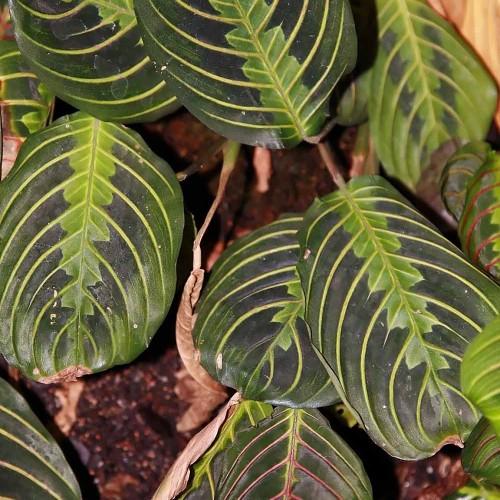
red-veined prayer plant
Maranta leuconeura 'Erythroneura'
Also Known As - herringbone plantCycle:
Perennial
Watering:
Average
Hardiness Zone:
11
Flowers:
Flowers In Summer
Sun:
full sun
Soil:
Humus rich, Well-drained
Fruits:
Fruits In Summer Ready In Summer
Leaf:
Yes
Growth Rate:
Moderate
Drought Tolerant:
Yes
Thorny:
Yes
Tropical:
Yes
Care Level:
Medium
watering
Shining mandevillas should be kept thoroughly watered; they generally require 1-2 inches of water per week. They should be watered deeply to reach the roots so that the top half of the soil is mostly dry before the next watering. This is especially important during the spring and summer months when the plant is actively growing; during this time it may need additional water to keep the soil moist but not soggy.
sunlight
Shining mandevilla plants should be placed in an area that receives at least 4-6 hours of direct sunlight each day or in a bright, sunny window. In areas that experience direct sunlight for more than 6 hours each day, the plant should be given some shade during the hottest parts of the day, such as late afternoon.
pruning
Shining mandevilla (Mandevilla splendens) should be pruned once or twice a year. Effective pruning encourages new growth, bloom, and shape. The best time to prune is when the plant has just finished flowering at the end of the summer. Prune as much as needed to maintain the desired shape of the plant; however, do not prune more than a third of the plant at once. Pruning should be done with pruning shears, as scissors or garden clippers can cause damage to the plant. Make sure to sterilize the pruning tools with alcohol before and after use.
